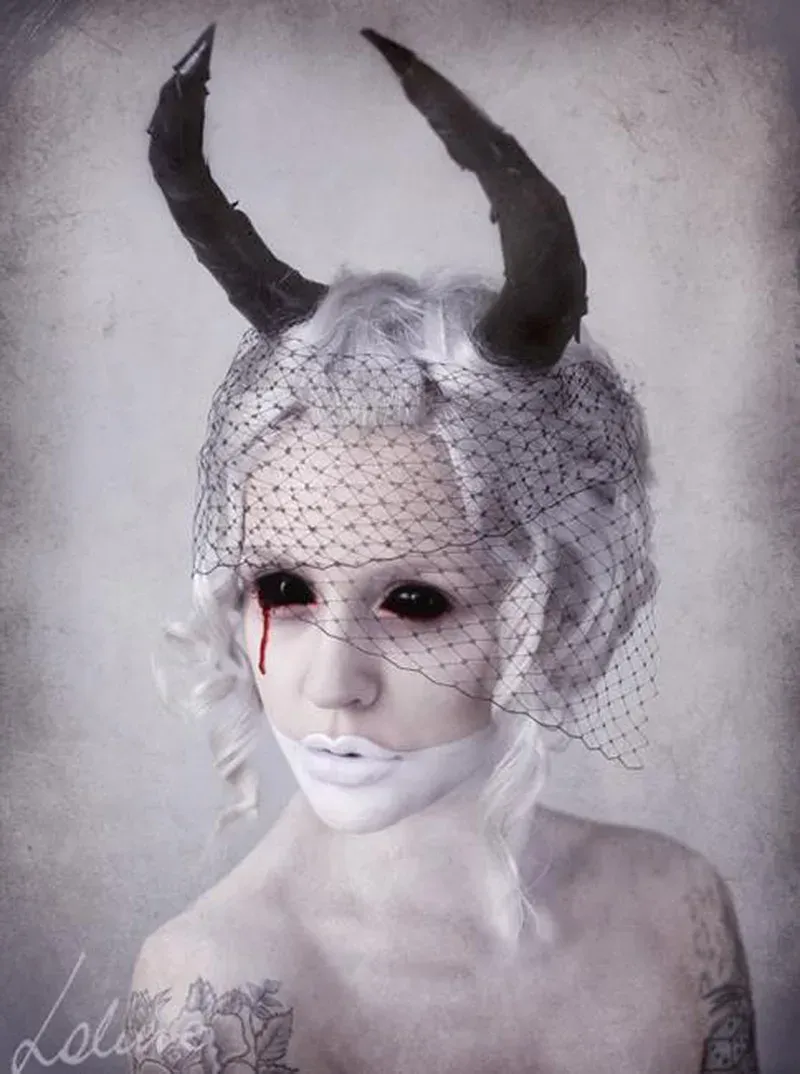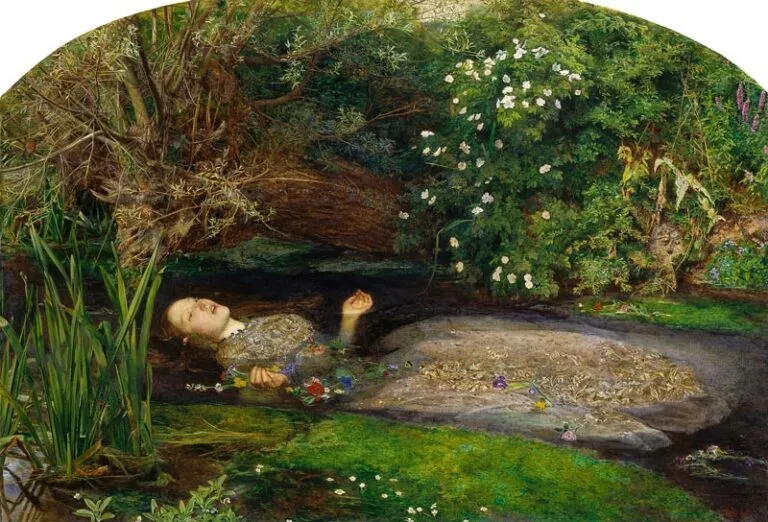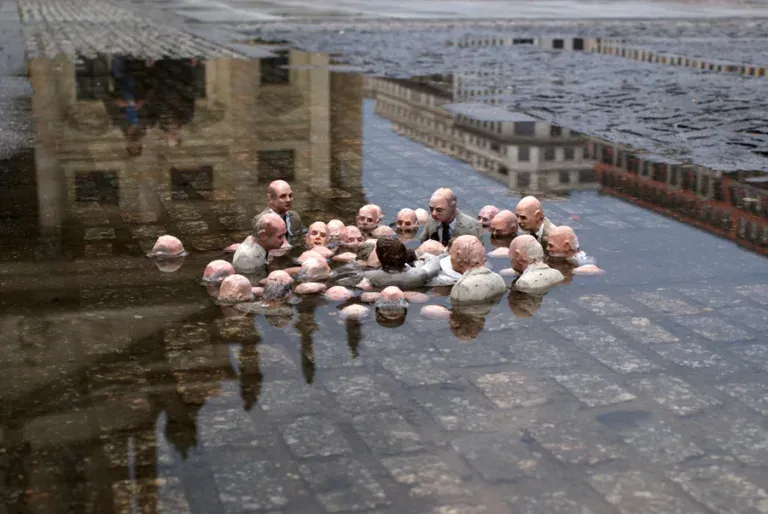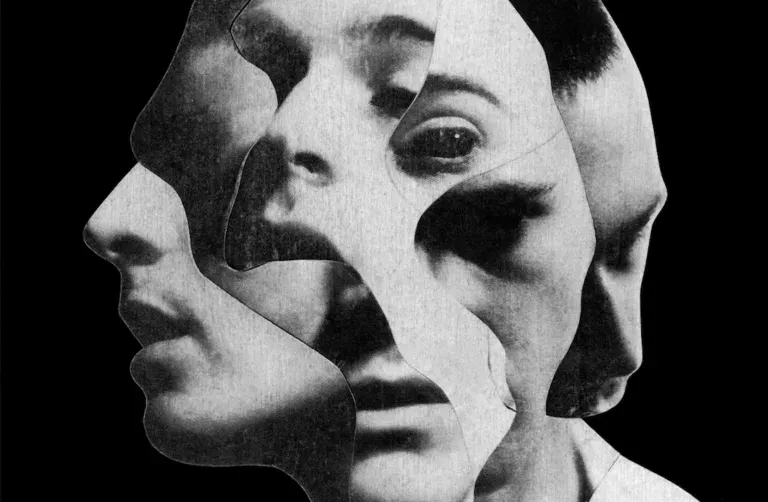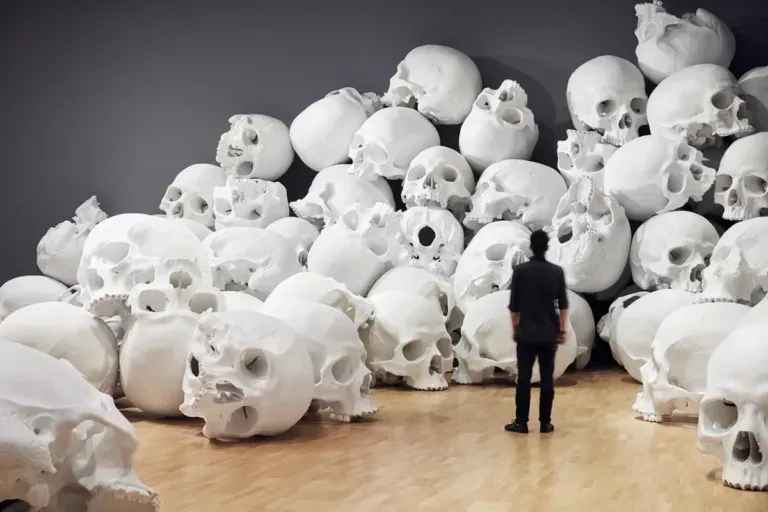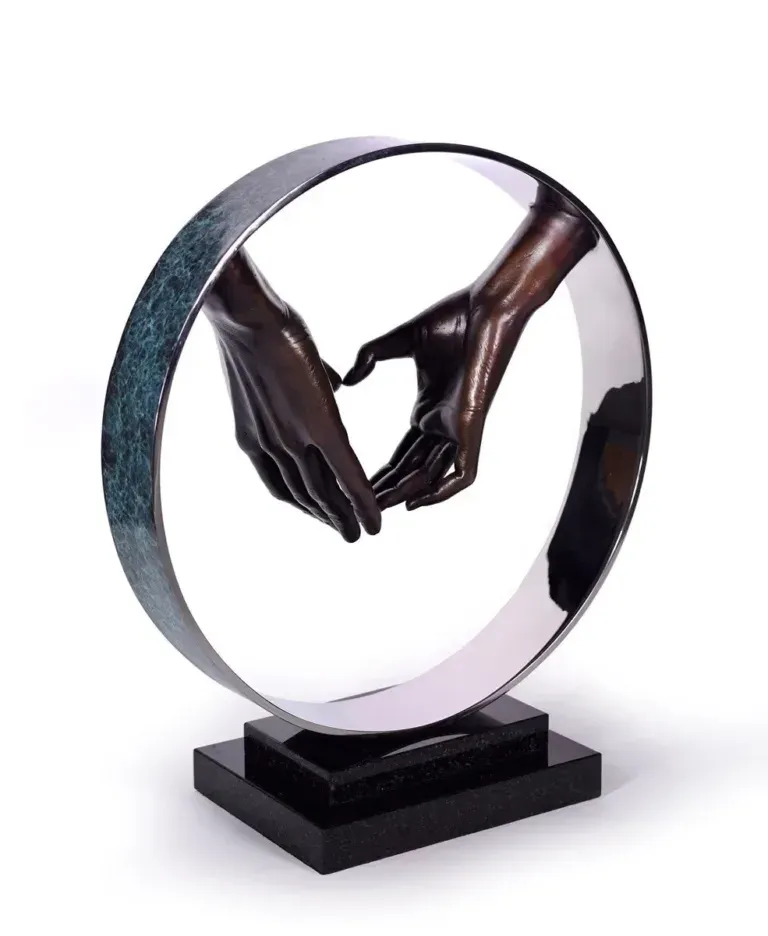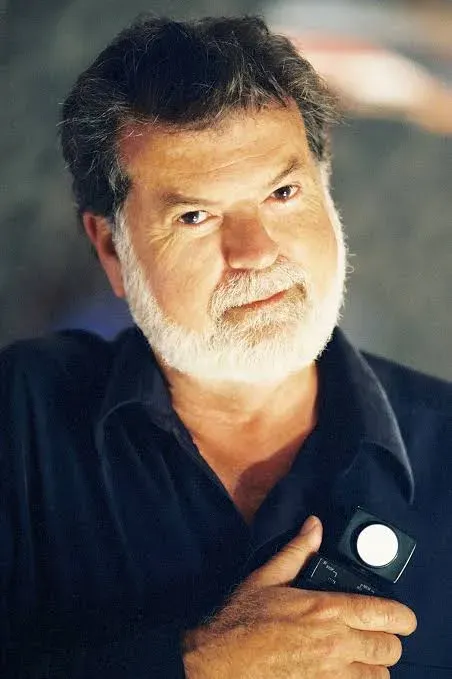The Dark and the Macabre of Miss Lakune
Miss Lakune, whose real name is Aleksandra, is an emerging photographer in the contemporary art scene, quickly distinguished by her unique and visionary style in the world of horror photography. Originally from Poland, Miss Lakune has managed to blend elements of dark art, surrealism, and symbolism into a body of work that explores the depths of the human unconscious, confronting the viewer with images that are both unsettling and captivating.
L’Infanzia e Le Origini dell’Isolamento Creativo
Aleksandra grew up in a context that profoundly influenced her artistic vision. Poland, with its complex history and sometimes dark and mysterious landscape, provided Miss Lakune with a rich ground for inspiration. From a young age, she developed a strong interest in the macabre and surreal, finding beauty in things that others might consider dark or frightening. This interest led her to explore the world of visual art through drawing and, later, photography.
Miss Lakune’s childhood was marked by a strong sense of isolation and introspection, elements that have had a lasting impact on her art. Her inclination to reflect on the dark side of life and the human psyche has deep roots, stemming from her personal experiences and her sensitivity to complex and contrasting emotions.
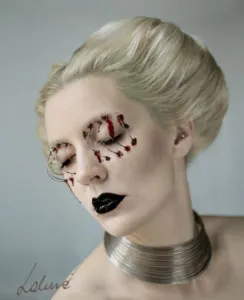 L’Incontro con la Fotografia: Un Mondo Oltre il Velo della Realtà
L’Incontro con la Fotografia: Un Mondo Oltre il Velo della Realtà
Miss Lakune’s artistic journey took a significant turn when she discovered photography. For her, the camera is not merely a tool for capturing reality, but a means to transform reality itself. Her photographs do not just represent what is visible; instead, they unveil hidden worlds made of fears, dreams, and nightmares. Through photography, Miss Lakune is able to explore the complexity of the human experience, bringing to light the shadows that dwell in the subconscious.
Her style is characterized by a strong gothic and surreal imprint, with a skillful use of light and shadow that helps create dense atmospheres full of tension. Each image is a window into an alternative world, where the laws of logic and physics are subverted, and where terror mingles with dark and irresistible beauty. Her works invite the viewer to immerse themselves in a journey into the unconscious, confronting fears and desires that often remain hidden in everyday life.
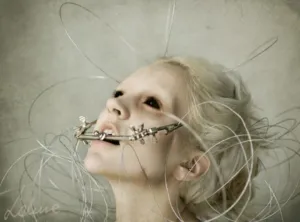 Estetica e Tematiche: Il Fascino dell’Oscurità
Estetica e Tematiche: Il Fascino dell’Oscurità
Miss Lakune’s photographs are marked by a refined yet disturbing aesthetic. Her works explore themes such as death, decay, human fragility, and the inevitability of fate, often through symbolic images rich in meaning. A recurring element in her works is the human body, represented in ways that highlight its vulnerability and transience. The body is often distorted, fragmented, or altered, suggesting a deep connection between physicality and the psychological experience of terror.
Symbolism plays a central role in Miss Lakune’s work. Every element present in her photographs is laden with meaning: from masks that hide identity, to mirrors that reflect alternative worlds, to everyday objects transformed into instruments of anguish. This use of symbolism allows Miss Lakune to create images that are not only aesthetically powerful but also deeply evocative, resonating on both an emotional and intellectual level.
Another crucial theme in Miss Lakune’s works is that of transformation. Her photographs often depict human figures in a state of transition, suspended between life and death, between reality and dream, between humanity and something other. This exploration of metamorphosis reflects a worldview in which nothing is static or permanent, and where identity itself is fluid and continuously evolving.
Il Processo Creativo: Dal Sogno all’Immagine
Miss Lakune’s creative process is a journey that begins deep within her mind and materializes through meticulous staging and post-production work. Each photograph is born from an idea or an image that Aleksandra visualizes in her mind. Often, these ideas are inspired by her dreams, fears, or reflections on the human condition. Once the idea is defined, she begins the planning phase, during which Miss Lakune carefully studies the composition, lighting, and props needed to bring her vision to life.
The shooting phase is a crucial moment, in which the artist seeks to capture the essence of the image she has envisioned. However, the process does not end with the simple shot; post-production plays a fundamental role in Miss Lakune’s work. Through digital editing techniques, she manipulates the image until achieving the desired effect, creating photographs that seem to belong to another world, teetering between the real and the imaginary.
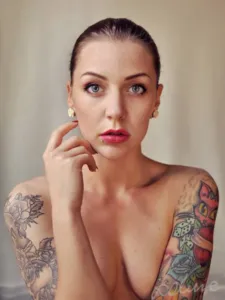 L’Impatto e l’Accoglienza nel Mondo dell’Arte
L’Impatto e l’Accoglienza nel Mondo dell’Arte
Despite being a relatively new figure in the international art scene, Miss Lakune has already garnered a following of art lovers and critics. Her works have been exhibited in various galleries and shows, receiving praise for their originality and ability to evoke complex and contrasting emotions. Her work has found a particularly receptive audience among fans of dark and gothic art, but it has also attracted the interest of those who appreciate conceptual art and surrealism.
The positive reception of her work is largely due to her ability to create images that are not only aesthetically captivating but also deeply reflective. Miss Lakune’s photographs invite the viewer to confront the dark side of their psyche, exploring themes that are often avoided or ignored in everyday life. This approach makes her work particularly powerful and relevant in an age where art is increasingly used as a tool to explore and understand the human experience.
Conclusione: Un’Artista in Ascesa nel Mondo dell’Horror e del Surrealismo
Miss Lakune represents one of the most interesting and original voices in the landscape of contemporary horror and surrealist photography. With her powerful and disturbing images, she has managed to create a unique visual world, where horror intertwines with beauty, and dreams with reality. Her work, while deeply personal, touches on universal themes and invites the viewer to explore the darkest recesses of their own mind.
In a world where art is often dominated by the pursuit of beauty and pleasure, Miss Lakune reminds us of the importance of confronting our fears and nightmares, finding in them not only terror but also a form of truth and beauty. With her unique vision and talent, Miss Lakune has already established herself as a prominent figure in the horror art world, and her work will undoubtedly continue to influence and inspire artists and audiences for many years to come.
Don’t miss the articles about the other Horror Photographers in our Top 10… they have explored the depths of human anguish and terror, capturing images that challenge and fascinate observers. Their ability to evoke intense emotions through photography has made them key figures in the global artistic landscape.
 Subscribe to our YouTube channel
Subscribe to our YouTube channel
